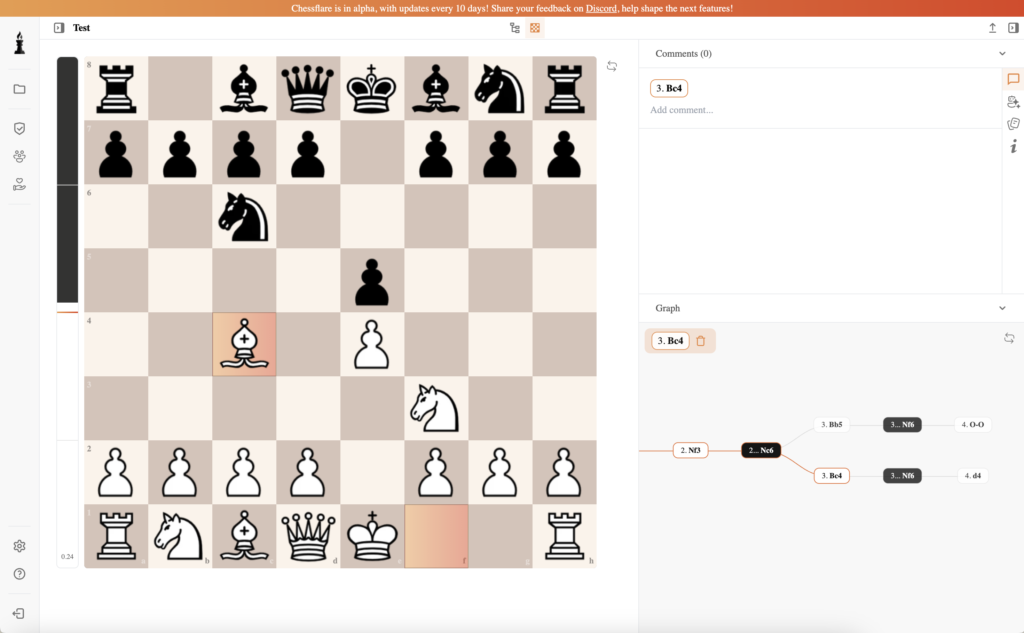The Romantic School of chess refers to a period in the 19th century where the game was characterized by bold, aggressive play, spectacular sacrifices, and an emphasis on tactical brilliance rather than positional subtleties. It was an era where gambits and open games reigned supreme, and the primary objective was to play for beauty and brilliancy rather than long-term strategic depth.
Origins and Philosophy
The Romantic School emerged in the early 1800s, a time when chess was largely seen as an artistic pursuit rather than a methodical science. Players of this era sought to dominate the board through rapid development, swift attacks, and breathtaking combinations. Defensive play was often viewed as a sign of passivity, and material was sacrificed freely in exchange for initiative and attacking chances.
The guiding principles of the Romantic School were:
- Open Games: The preference for 1.e4 e5 openings, which lead to tactical and dynamic play.
- Gambits and sacrifices: Material was less important than time and activity.
- Direct attacks: Immediate threats to the king were prioritized over long-term positional considerations.
- Brilliancy over pragmatism: The aesthetic beauty of a game was often as important as the result.
Key Openings of the Romantic School
Several aggressive and tactical openings flourished during this period, many of which remain popular in modern chess. Some of the most characteristic openings include:
King’s Gambit
One of the most iconic openings of the Romantic School, the King’s Gambit arises after 1.e4 e5 2.f4. White sacrifices a pawn to gain rapid development and open attacking lines. Players like Adolf Anderssen and Paul Morphy demonstrated the devastating potential of this opening in numerous brilliant games.
Evans Gambit
A favorite weapon of Romantic players, the Evans Gambit (1.e4 e5 2.Nf3 Nc6 3.Bc4 Bc5 4.b4) is an aggressive attempt to seize the center and launch an early attack. White sacrifices a pawn on b4 to accelerate development and exert immense pressure on Black’s position.
Scotch Gambit
The Scotch Gambit (1.e4 e5 2.Nf3 Nc6 3.d4 exd4 4.Bc4) is another sharp opening that leads to open positions, where rapid piece development and tactical opportunities abound.
Danish Gambit
The ultra-aggressive Danish Gambit (1.e4 e5 2.d4 exd4 3.c3) is a full-fledged sacrifice where White often gives up two pawns for an overwhelming initiative. Though it has fallen out of favor in top-level play, it remains a thrilling opening for attacking players.
The Legends of the Romantic School
Several legendary players epitomized the Romantic School, crafting unforgettable masterpieces that continue to inspire chess enthusiasts today.
Adolf Anderssen
Adolf Anderssen was one of the greatest exponents of the Romantic School. His games, filled with spectacular sacrifices, showcased the spirit of bold attacking play. His most famous games, The Immortal Game (1851) and The Evergreen Game (1852), are timeless examples of the Romantic ideal—sacrificing multiple pieces to deliver a brilliant checkmate.
Paul Morphy
Paul Morphy, often regarded as the first unofficial world champion, embodied the Romantic style at its peak. His games demonstrated a perfect blend of tactical genius and deep understanding of initiative. His legendary Opera Game (1858), where he delivered a crushing attack against two amateur opponents, remains one of the most famous games in chess history.
Henry Blackburne
Known as the Black Death, Henry Blackburne was a formidable Romantic player who excelled at dazzling combinations. His sharp attacking style led to numerous stunning victories, and his legacy remains in many tactical motifs that bear his name.
Lionel Kieseritzky
While not as successful as his contemporaries, Lionel Kieseritzky was an important figure in the Romantic era. He was the unfortunate victim of The Immortal Game, where Anderssen sacrificed nearly his entire army to deliver checkmate. Nevertheless, Kieseritzky contributed to chess theory and helped shape the attacking play of the time.
The Decline of the Romantic School
By the late 19th century, chess began transitioning towards a more scientific and positional approach. The emergence of Wilhelm Steinitz, the first official World Chess Champion, marked the decline of the Romantic School. Steinitz introduced the concept of positional play, where accumulating small advantages and defensive solidity took precedence over reckless attacks.
Steinitz’s ideas paved the way for modern chess, where the balance between strategy and tactics became paramount. As defensive techniques improved, many of the speculative gambits of the Romantic era became less effective at the highest levels of play.
Legacy of the Romantic School
Despite its decline, the Romantic School left an indelible mark on chess history. Many of its principles remain valuable, especially in tactical play. Today’s dynamic attacking players, such as Garry Kasparov and Magnus Carlsen, incorporate elements of Romantic play into their games, demonstrating that the spirit of Anderssen and Morphy is still alive.
Romantic-era games are still studied for their tactical brilliance, and gambits like the King’s Gambit and Evans Gambit continue to be played, even at the grandmaster level. The Romantic School serves as a reminder that chess is not only about winning but also about creating beautiful and memorable games.
Conclusion
The Romantic School of chess was a golden age of dazzling sacrifices, fearless aggression, and artistic play. While modern chess has evolved beyond its principles, the era’s games continue to inspire and educate players of all levels. The spirit of Romantic chess lives on in every brilliant combination, every audacious sacrifice, and every game played with a heart full of passion.

